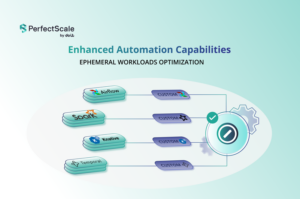Achieving MAP Competency status demonstrates your skill at helping customers migrate to AWS – but the bar is high
The Amazon Web Services (AWS) Migration Acceleration Program (MAP) gives organizations the edge with an outcome-driven methodology for accelerated cloud migration and modernization. AWS Partners who attain MAP Competency status have proven expertise and success in helping customers with their AWS migration. In 2022, DoiT added MAP Competency status to its portfolio of AWS Partner Program certifications and distinctions.
What is MAP?
The AWS MAP is a comprehensive, proven cloud migration framework based upon AWS’s experience migrating thousands of enterprise customers to the cloud. The program includes, but is not limited to, tooling for cutting costs and automating execution, customized training, expertise from AWS Partners and AWS investment.
MAP follows a framework of Assess, Mobilize, Migrate and Modernize to help customers fulfill their migration objectives, building robust AWS cloud foundations, reducing risk and offsetting the initial cost of the migrations. Successful participation in the program ensures customers are well placed to harness the main idea of cloud computing, which is utility-based computing – i.e., paying only for what you use. This requires an understanding of performance, security and reliability in the cloud. MAP is the beginning of your journey to the cloud.
How do partners gain AWS MAP competency?
Partners who want to gain MAP competency to distinguish themselves as experts in helping customers migrate to AWS must undergo a strict audit and approval process. Apart from a very detailed checklist that starts with the business and dives deep into both the technical and delivery aspects, they will have to submit several detailed case studies illustrating their extensive expertise and deep understanding of AWS migrations and related AWS services. They must also have strong teams of AWS Trained and Certified technical consultants and exceptional expertise in all aspects of migration lifecycles.
Amazon sets the bar very high to ensure that AWS Partners can go into minute detail with customers to understand all the requirements for a successful migration to AWS – especially for the most complex and time-consuming migrations. Achieving the competency validates the partner’s expertise through demonstrated customer engagements. These engagements can stem from a packaged offer, software-as-a-service (SaaS) solution or as a custom assignment, but all must arise from a “practice” within the partner’s organization. A practice is defined as a group of professionals with the specific skills, tools and processes to deliver results with accuracy and promptness.
Why did DoiT decide to pursue AWS MAP competency?
Migrations are complex at the best of times. There is so much in scope and so many elements to consider that you are bound to make mistakes if you don’t have prior experience. From the original business driver to migrate to the eventual technical implementation, Amazon gives customers a rich choice of ways to do things, all of which are the “right” ways to migrate. DoiT has many years of experience working with cloud and AWS, and we leverage this to ensure our customers do what is required to meet their business objectives.
We wanted to consolidate the trust of our customers with a validated program from Amazon that shows we have both the skill and the business acumen to help them deliver on the promise of cloud computing. We detail some of the processes involved in a migration to AWS under MAP here.
The number of factors in play means that migrations into AWS can be complex and difficult. Customers need reliable advice on everything from business requirements to skill sets and executive buy-in to technical elements as they migrate workloads on AWS. With this competency we have been able to evidence the great work we undertake with our customers in migrations and all this at zero extra cost to our customers.
How do you ensure you fulfill all MAP competency requirements?
Once you have made Amazon aware that you would like to apply for the MAP Competency, you can begin shaping your business to ensure that you raise the bar on all the prerequisites for MAP. This is not just a technical checklist: As with all things Amazon-related, it requires a deep dive and data to support the application.
The extensive checklist covers business processes, delivery models and customer satisfaction – Customer Obsession being the first of Amazon’s Leadership Principles.
You don’t have to do this alone: The Amazon team will be right behind you offering advice and help along the way. Meetings with your Amazon Business Development Manager (BDM) and Partner Solutions Architects (PSAs) will give you sound guidance on what is required. An understanding of the Amazon culture is valuable because it helps you understand the company’s motivations as well as their expectations.
What are the most challenging aspects?
The two main challenges you are likely to encounter in the process revolve around business alignment and attaining customer references. Another associated challenge is the sheer volume of data you will need to supply to support your application.
Business alignment:
Aligning the entire business so that it can run and maintain the MAP competency is challenging – particularly while you are executing the customer migrations required to provide the necessary evidence to show Amazon that you can do this. Amazon will only approve your application if you can prove you can do it. Your ability to deliver is irrelevant; what matters is your actual delivery.
Attaining customer references:
Customer references are largely out of your control. To achieve MAP competency, a customer must provide a public-facing reference for the work you have undertaken, but the best examples of your work may not be available for public disclosure. Customers have many reasons for not wanting to reveal they are on AWS, so finding customers willing to act as public references can be a challenge. We recommend you ask your customers early in the process.
The volume of data, written documents and other evidence you need to provide can be daunting. You will need to collate, refine and produce hundreds of elements to ensure that you are providing Amazon with more than enough data to demonstrate you are a partner who is already delivering against the standard.
How long does the process take?
This is not as simple a question as you might think. Application to approval took DoiT about six months, but this is actually the final part of the process because so much work must be done in advance.
As I have said previously, this is not about whether you have the capability to deliver, but whether you can provide evidence of successfully delivering migrations in the past. As you gather data and provide evidence during the application process, you will have carried out a huge body of work already delivering migrations successfully for customers. How long does the process take? In the words of a typical consultant – it depends.
What are the benefits of having AWS MAP competency?
Trust is by far the biggest benefit of achieving AWS MAP competency.
DoiT was already working to the MAP standard, and achieving the formal recognition of MAP allows us to build on the work we do, but it means that customers can now check on the Amazon Partner Network and find a partner with the proven ability to both deliver results and carry out the work in a way that Amazon has approved.
The key benefits for customers are cost optimization, increased staff productivity, enhanced operational resilience and greater business agility.
Optimize costs:
MAP decreases the cost of moving infrastructure and applications to the cloud, allowing you to focus only on what is required and what differentiates you and your business.
Boost staff productivity
MAP is not just a technical exercise; it is also business-led. DoiT starts with the business value of a cloud migration and works backward from there. We discuss frameworks like the Cloud Adoption Framework (CAF) and the creation of the Cloud Centre of Excellence (CCOE) within your business to ensure that your employees move from tactical break fixes to strategic work that allows customers to scale and spend less time on day-to-day administrative tasks.
Improve operational resilience
Moving from a data-center view of IT to a cloud-centric view realizes the promise of utility-based computing. By using elements such as continuous deployments/integration, automation and managed services including relational database services (RDS), the elements typically responsible for operational failures can be mitigated – thus improving both your service availability and reliability, as well as strengthening your IT security. All this enhances your ability to automatically scale to cope with ever-changing demands on your workloads.
Increase business agility
Wrapping all these other elements up allows you to focus on what is important to you and your customers. With migrations, you can remove or retire some of your technical debt and cut the time to deployment to complete projects. Allowing AWS to reduce the amount of undifferentiated heavy lifting means you can focus on the important matter of running your business.
Have you any recommendations for those interested in becoming a MAP program member?
My primary recommendation is to understand Amazon's culture. This will help you appreciate the motivations of the vendor (Amazon). Start by looking at the company’s Leadership Principles, which will give you many clues. Look into how Amazon’s expectations are managed regarding AWS customers.
Your next task is to talk to your Amazon team (BDM, PSA, etc.) to get the ball rolling. This will save you considerable time navigating the plethora of options and documentation available to you.
Ensure that all the work that you carry out around migrations is well-documented and organized. You must locate all these documents, proposals, architectural diagrams and meeting notes to present them to Amazon as a package.
Amazon’s Amazon Partner Network (APN, also known as Partner Central) is a free tool partners can use to register their interest and gather all the resources required to start and complete their MAP or other competencies. APN remains difficult to navigate, but it’s the main way to share and update the information and data Amazon needs to help you to be successful.
For example, to present the data to Amazon for the application of MAP, we needed to upload the data to APN. Our highly compressed data pack was 120MB, but the limit on APN is 3MB. We ended up uploading the zip file to S3 and sharing the link to the resources in S3 on APN, thereby demonstrating the third Amazon Leadership Principle – Invent and Simplify!
What next?
Working closely with Amazon and all its programs and competencies helps you build trust with customers and enables your business to deliver what is needed on time. The decision to make these programs difficult to attain and retain is a deliberate one on Amazon’s part: You need to demonstrate you’re growing the practice and owning the relationship with your AWS customers for the benefit of all parties.
Your customers achieve successful migration faster, more cost-effectively and with less churn — and they also learn to become more independent. From your company’s perspective, Amazon and the various frameworks support you to work in ways that drive more revenue and expand your customer base. Growing that base lies at the heart of what these programs deliver.
Your relationship with Amazon does not end when you achieve your program milestone: It’s the beginning of an iterative process that helps you and your customers understand the real value of cloud.
Have fun and good luck with your next AWS Competency!



